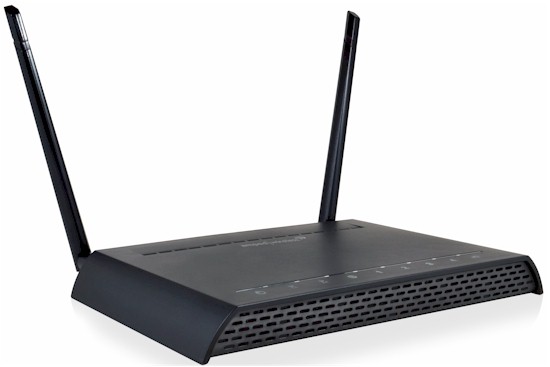
| At a glance | |
|---|---|
| Product | Amped Wireless High Power AC1200 Wi-Fi Router (RTA1200) [Website] |
| Summary | QCA-based AC1200 router with Gigabit Ethernet ports and USB 2.0 storage sharing |
| Pros | • Port-based VLANs • Multiple DoS firewall options |
| Cons | • Slow attached storage sharing • USB 2.0 vs. USB 3.0 • Not Wi-Fi Certified • Expensive for an AC1200 router • No wireless bridging |
Typical Price: $0 Buy From Amazon
Introduction
Updated 2/25/16 – Router performance retest due to measurement process error
The RTA1200 High Power AC1200 Wi-Fi Router from Amped Wireless was originally going to be included in Part 1 of our AC1200 router roundup, but didn’t have a valid FCC ID registration. The product now is properly registered, so here’s the review.
The chart below, taken from the Amped Wireless website, shows the RTA1200 one step below the RTA1750 that Tim recently reviewed.
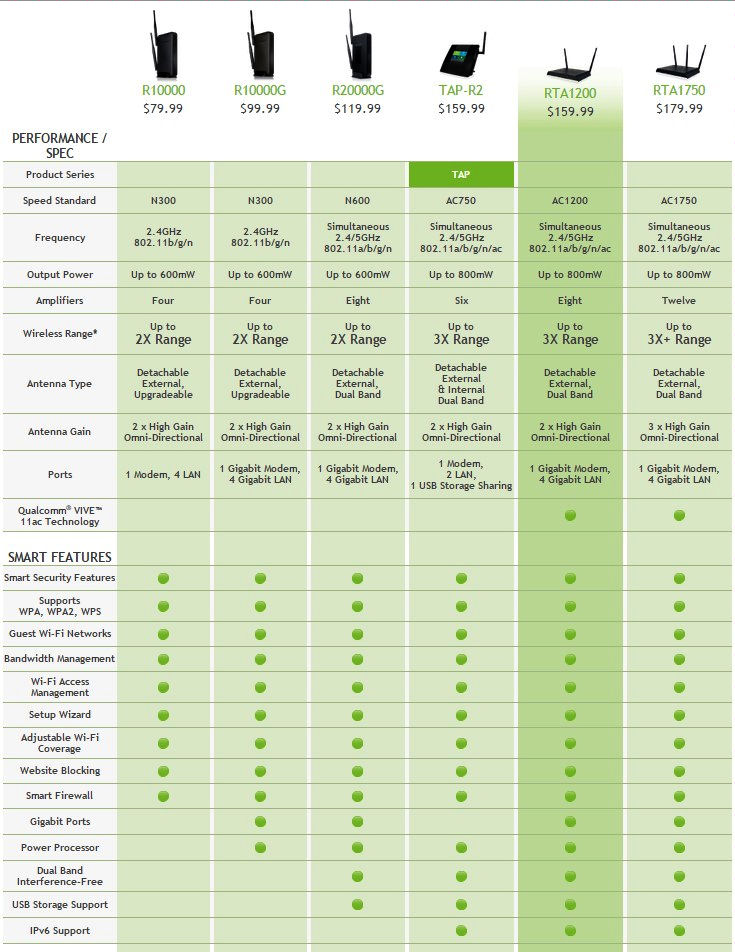
Amped Wireless product lineup
The RTA1200 and the RTA1750 are almost identical except for a few differences in radio components to produce the RTA1200’s 2X2 design. Both routers use external antennas and about the only difference in the cases is the additional antenna on the RTA1750.
The case has a dark charcoal color and a matte finish. The router is designed to sit flat on your desktop, but there are mounting holes should you wish to mount it vertically on the wall. The top panel has nine white LEDs. There are plastic light pipes from the top panel down to the board to redirect and concentrate the light. The company name as well as the designation for the LEDs appears to be molded in glossy finish so there’s very little contrast between the case itself and the markings, making the LED designations difficult to see. The chart below shows callouts for the front panel LEDs.
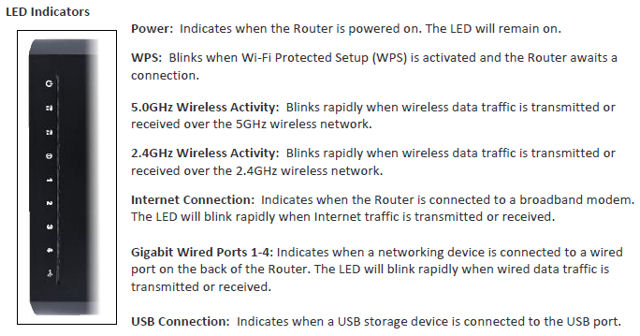
Amped Wireless RTA1200 Front Panel Callout
The rear panel of the RTA1200 is identical to the RTA1750 with the exception of having only two antenna ports.
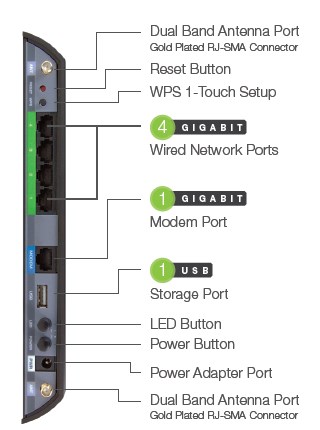
Amped Wireless RTA1200 Rear Panel Callout
Inside
The RTA1200 is powered by a Qualcomm Atheros QCA9957 2X2 abgn SoC WLAN, which also serves as the 2.4 GHz radio. The 5 GHz radio is a separate QCA9882 2X2 802.11ac radio. If this architecture sounds familiar, it is. The RTA1750 uses a QCA9558 3X3 abgn SoC and a separate Qualcomm QCA9880 3X3 802.11ac radio. Both routers have the same amount of RAM (128 MB) and Flash (16MB) and use a QCA8337 for the five Gigabit Ethernet ports.
The main PCB for the RTA1200 shares much of its design with the RTA1750.
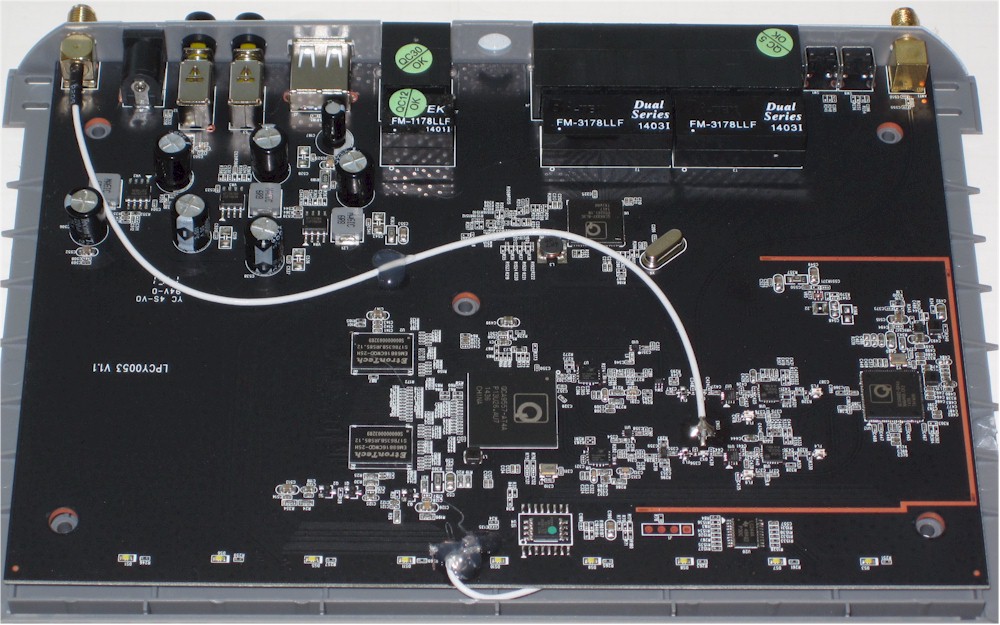
Amped Wireless RTA1200 Component side of the main PCB
While board sizes and layouts are similar, the RTA1750 PCB shown below has more components because of the additional amplifiers for its 3X3 design.
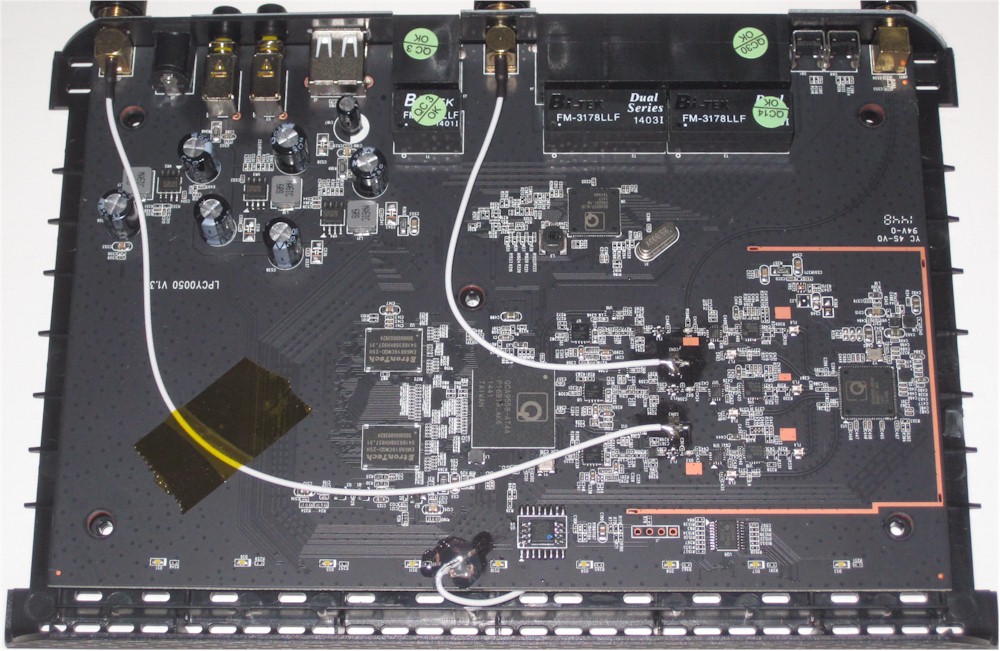
Amped Wireless RTA1750 Component side of the main PCB
Table 1 below summarizes the key components of the RTA 1200 and the RTA1750. Both devices use the same Skyworks amplifiers and LNAs – the RTA1750 just uses three of each of the chips instead of two.
| Amped Wireless RTA1200 | Amped Wireless RTA1750 | |
|---|---|---|
| CPU | QCA9557 2X2 abgn WLAN SoC | QCA9558 3×3 abgn WLAN SoC |
| Switch | QCA8337 | QCA8337 |
| RAM | 128 MB | 128 MB |
| Flash | 16 MB | 16 MB |
| 2.4 GHz Radio | In QCA9557 – Skyworks SKY65900 2.4 GHz power amp (x2) – Skyworks SKY15971 2.4 GHz LNA (x2) |
In QCA9558 – Skyworks SKY65900 2.4 GHz power amp (x3) – Skyworks SKY15971 2.4 GHz LNA (x3) |
| 5 GHz radio | – QCA9882 2×2 802.11ac radio – Skyworks SE5023L 5 GHz power amp (x2) – Skyworks SKY85601 5 GHz LNA + switch (x2) |
– QCA9880 3×3 802.11ac radio – Skyworks SE5023L 5 GHz power amp (x3) – Skyworks SKY85601 5 GHz LNA + switch (x3) |
Table 1: Key components for the Amped Wireless RTA1200 and RTA 1750
Features
The feature set as well as the user interface on the RTA1200 is essentially the same as what you’ll find in Tim’s review of the RTA1750, so I won’t duplicate it here. The review includes a slideshow showing many of the admin screens.
The screenshot below shows the landing page for the RTA1200. I’ve also included a gallery with just a few screenshots that I thought showed some of the interesting features of the router. I’ll also briefly comment of a few features.
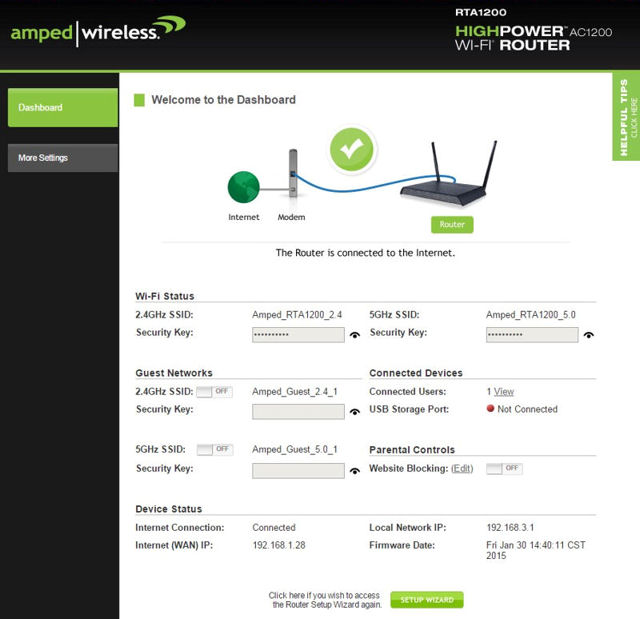
Amped Wireless RTA1200 Dashboard
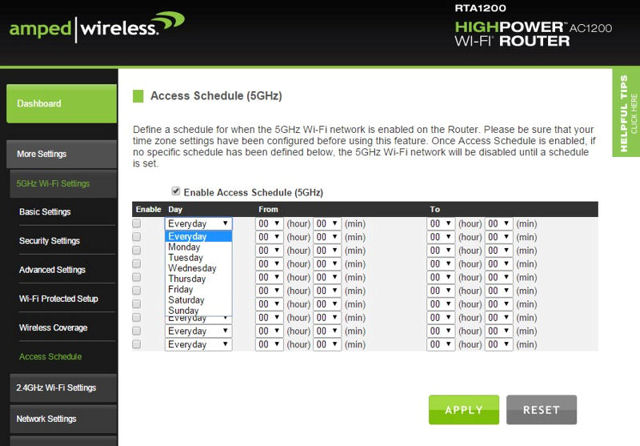
You can set and access for each wireless network

A number of options are available on the Advancd menu including some basic IPv6 settings
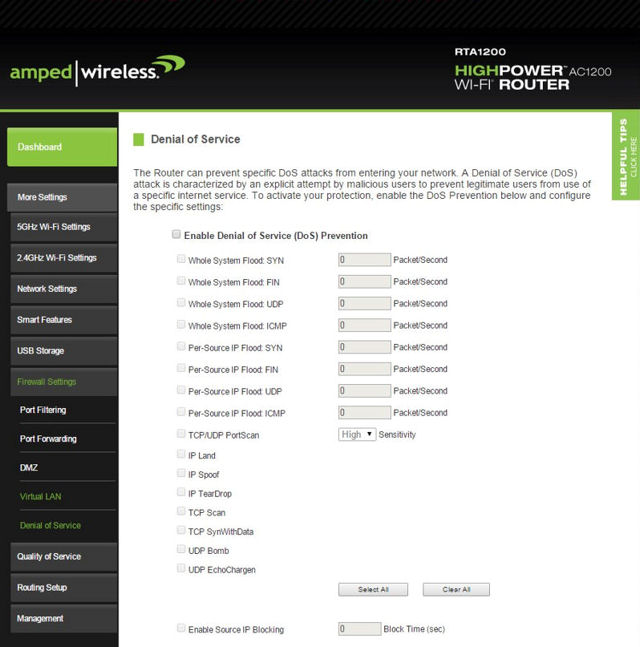
You can set Packet/Second threshholds for eight types of Denial of Service attacks.
Here are a few interesting features I discovered going through all of the menus:
Network settings – The local network setup supports 8021D spanning tree. The options are enabled or disabled.
Firewall – you can set up each port on the router as an individual VLAN. For each VLAN, you could enable/disable, tag, set the VID and set priority. The firewall supports port filtering as well as port forwarding. Port triggering is not supported. The firewall also features Denial of Service protection for eight different types of attacks (see gallery above).
Quality of service – You can create quality of service for a range of IP addresses, individual MAC addresses or IPv6 addresses. You can choose one of two operating modes: Restrict maximum bandwidth or guarantee minimum bandwidth. QoS is fairly basic and is not protocol based.
Dynamic DNS – only one DDNS provider, DynDNS is supported
You can control wireless output power to restrict the range of you coverage. There are five power levels ranging from 15% to 100%. 100% is the default.
The RTA1200 supports both local logging as well as logging to an external Syslog server.
Storage Performance
The composite image below shows all AC1200 routers that we’ve tested with our standard procedure with USB 2.0 connections and both FAT32 and NTFS drive formats. Results for FAT32 Write and Read are at the top and NTFS Write and Read results are at the bottom. As you can see, the RTA1200 ranked near the bottom of the charts. Compared to the top performer for each test, the range of performance for the RTA1200 was 9.4% to 31.6%.
We did experience a few issues with attached storage on the RTA1200. First, for our tests, we normally test with a drive formatted with three partitions – one each for FAT32, NTFS and EXT3. The RTA1200 only recognizes a single partition – apparently the first one it sees, which is FAT32. We had to go back and repartition the disk with only a single NTFS partition in order to run those tests. We had a similar experience with testing storage performance on the RTA1750.
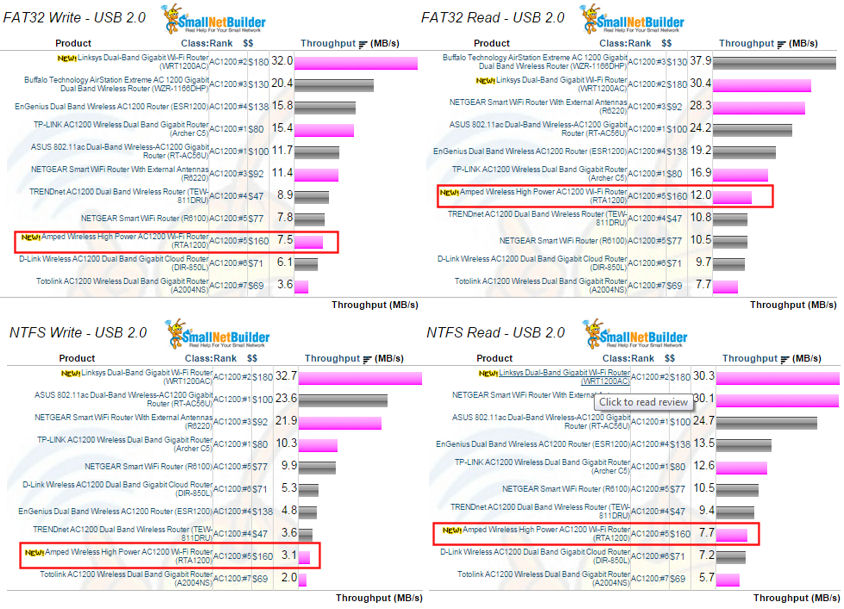
USB 2.0 File copy throughput comparison for FAT32 and NTFS – MBytes/sec
In addition, it appears the USB admin code has some errors. The screenshot below shows exposed HTML code in the Device Name and File System fields.
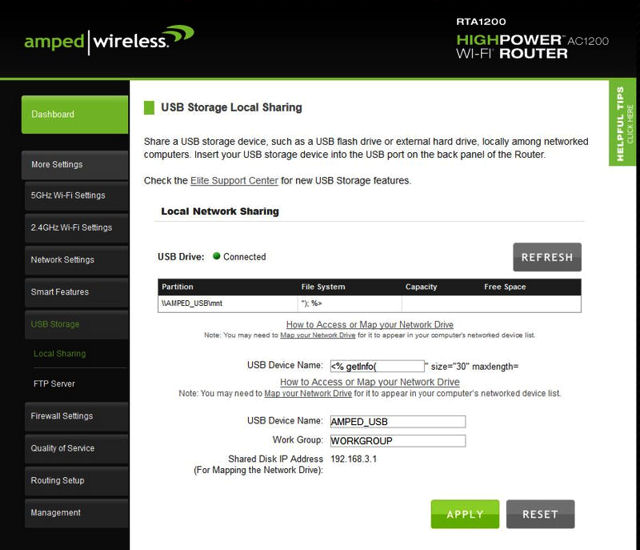
Amped Wireless RTA1200 – USB Storage
Routing Performance
Updated 2/25/16 – Router performance retest due to measurement process error
Routing throughput was measured using our standard router test process with the router loaded with 1.1.0 firmware. For comparison, I chose the top-rated AC1200 class router, the TP-LINK Archer C5 and #2 ranked Linksys WRT1200AC. The WRT1200AC is the only AC1200 class router tested using our latest wireless test method (pink bars) that is more expensive than the Amped Wireless RTA1200.
Table 2 summarizes the results, showing all three compared routers with similar performance
| Test Description | Amped RTA1200 | TP-LINK Archer C5 | Linksys WRT1200AC |
|---|---|---|---|
| WAN – LAN (Mbps) | 817 Mbps | 842 Mbps | 751 Mbps |
| LAN – WAN (Mbps) | 819 Mbps | 806 Mbps | 812 Mbps |
| Total Simultaneous (Mbps) | 1162 Mbps | 1487 Mbps | 1335 Mbps |
| Maximum Simultaneous Connections | 31,485 | 40,574 | 33,933 |
| Firmware Version | 1.1.0 | 3.14.3 Build 141126 Rel.6217n | 1.0.3.166464 |
Table 2: Comparative routing performance
For the unidirectional tests the IxChariot plot below shows the usual cyclical variation seen in this test. Throughput is about as balanced as you can get for this test.
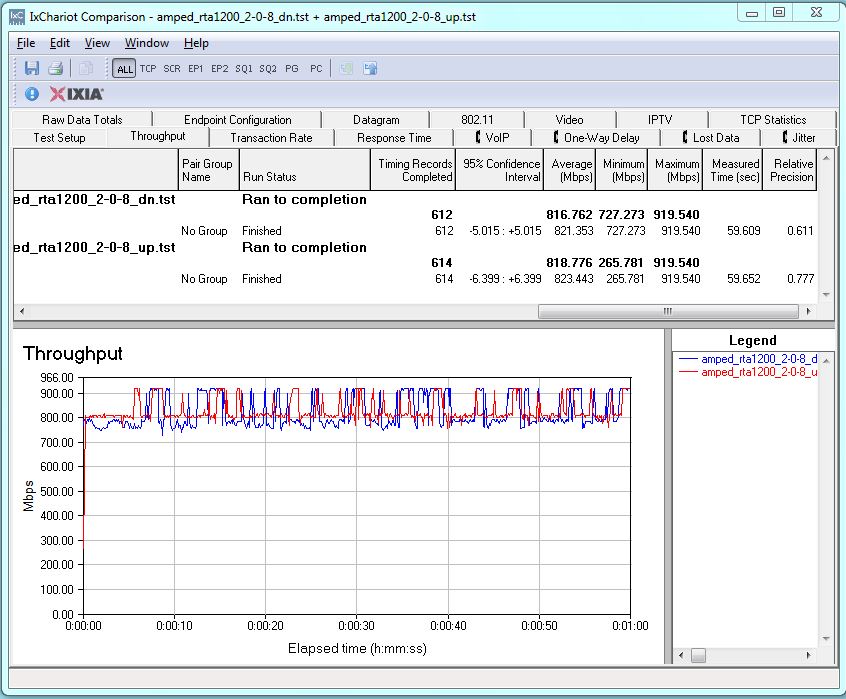
Amped Wireless RTA1200 unidirectional throughput
The simultaneous uplink/downlink tests show battling between the up and downlink, indicating the router is struggling with the load.
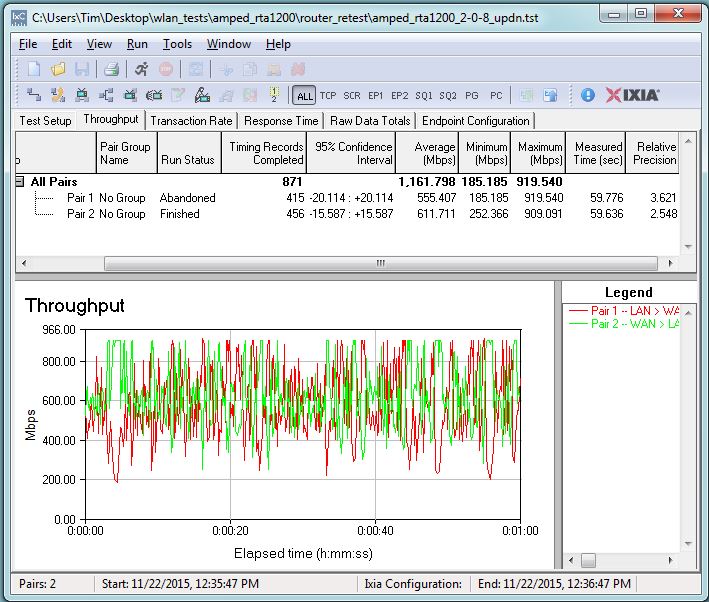
Amped Wireless RTA1200 simultaneous throughput
Wireless Performance
None of the products from Amped Wireless are Wi-Fi certified. For throughput testing, all tests were run using our Version 8 Wireless test process with 1.1.0 version firmware loaded. The router was first reset to factory defaults and Channel 6 was set for 2.4 GHz and Channel 153 for 5 GHz. 20 MHz bandwidth mode was set for 2.4 GHz and 5 GHz was set for 80 MHz bandwidth mode.
The Benchmark Summary below shows the average of throughput measurements made in all test locations. Here we see the same performance results for storage and routing performance that were presented in comparative tables and images above. We’ll drill down on the wireless performance in the Throughput vs. Attenuation charts below.
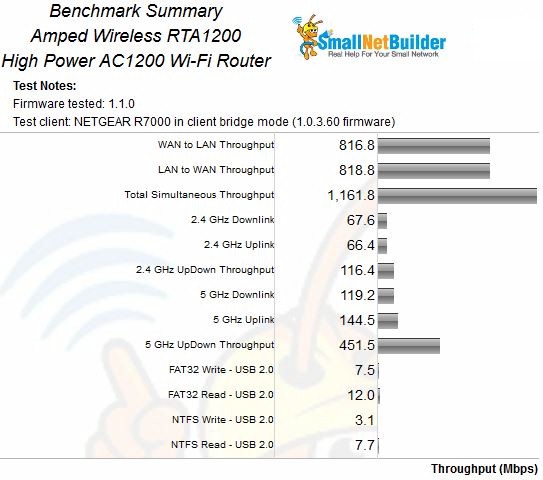
Amped Wireless RTA1200 Benchmark Summary
Our throughput vs. attenuation plots were generated using the same three AC1200 class products used in the comparisons presented above: the RTA1200, TP-LINK Archer C5 and Linksys WRT1200AC.
For the 2.4 GHz Uplink test, the TP-LINK maintains higher throughput throughout its tested range and drops connection after the same attenuation as the Amped. For 2.4 GHz downlink, the TP-LINK again turns in the highest throughput with strong signal levels (low attenuation values). The Amped and Linksys track together until 27 dB attenuation, then diverge, with the Amped’s throughput falling off more quickly than the Linksys’. Keep in mind, the Archer C5 is actually a rebadged 3×3 AC1750 class Archer C7, so it has the potential benefit of improved receive gain from the third antenna.
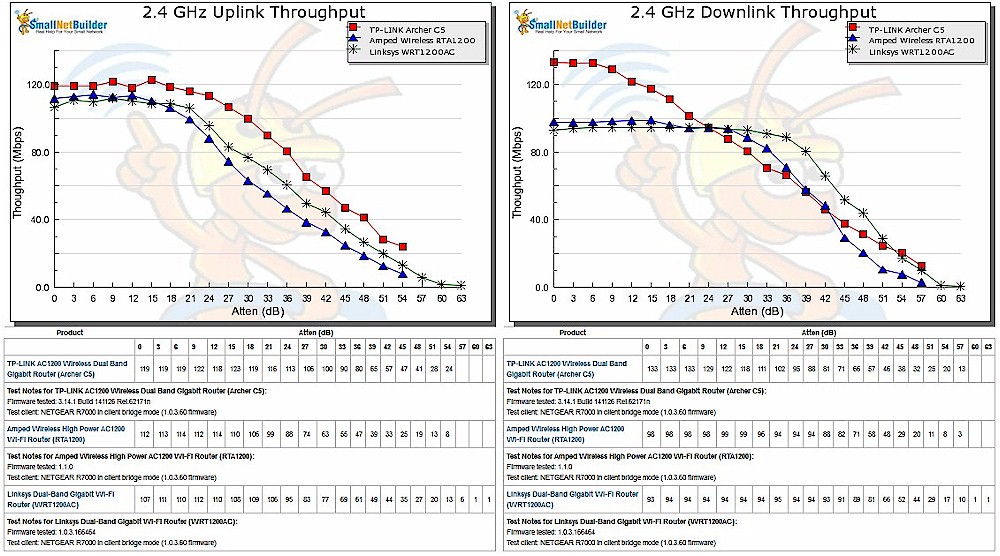
2.4 GHz Uplink and Downlink Throughput vs. Attenuation
The 5 GHz throughput vs attenuation plots are quite a bit simpler, as the plots don’t cross each other very much. For the 5 GHz uplink, the #1-ranked TP-LINK Archer C5 starts out with better performance than the other two and maintains the best performance out to the end of the test. The Amped Wireless RTA1200 holds a performance edge over the Linksys WRT1200AC throughout its entire range, but drops its connection with 3 db less of attenuation than the TP-LINK or the Linksys.
For the 5 GHz downlink tests, the Linksys and the TP-LINK jockey for the lead throughout the entire range of attenuation with the Amped Wireless holding onto a distant third place.
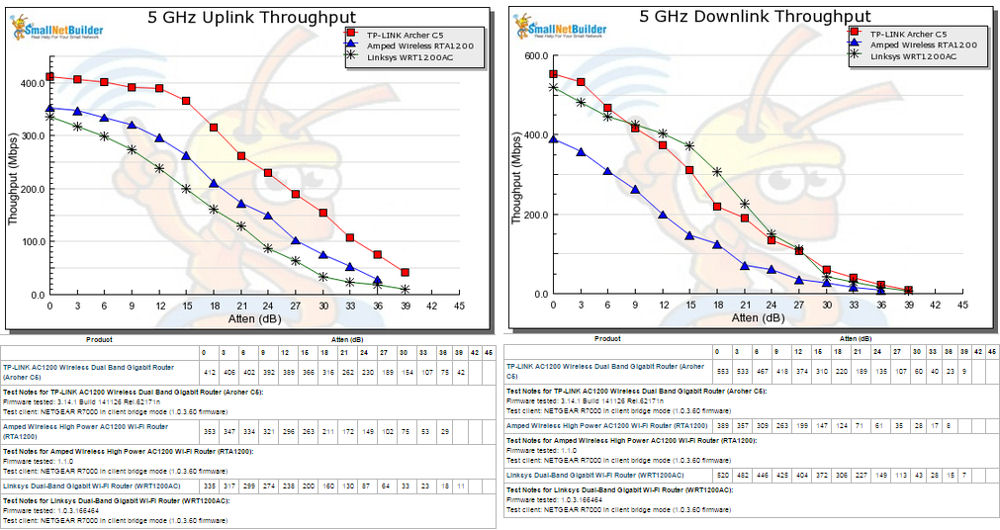
5 GHz Uplink and Downlink Throughput vs. Attenuation
Ranking
Using the Router Ranker set to AC1200 class routers and latest (Revision 8) test method, the RTA1200 ranked #4 out of seven products tested, between the Netis WF2780, which costs about half as much, and Linksys EA6350, which is around $50 cheaper.
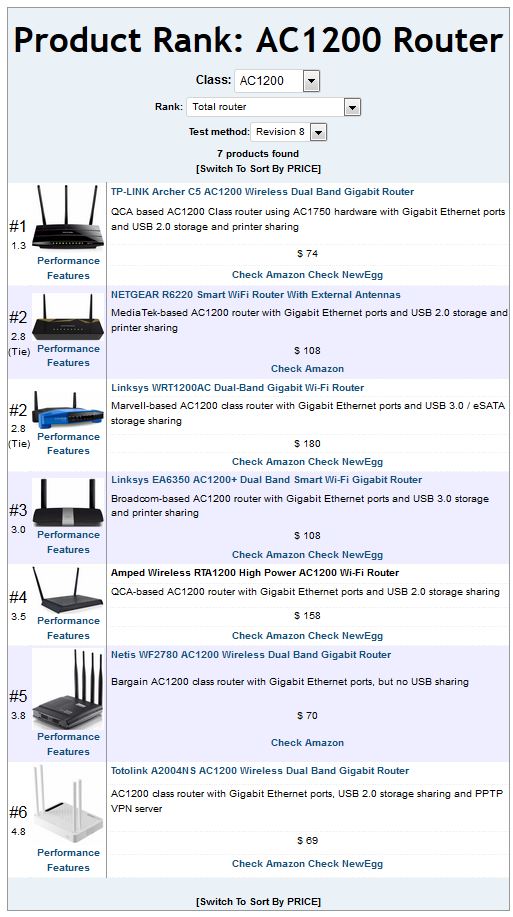
Product Rank for AC1200 class routers using Revision 8 testing
Comparing Ranker performance summaries, the RTA1200 ranks lower than the TP-LINK and Linksys competitors for average wireless throughput and ties the Linksys for Maximum Wireless Throughput. The Wireless Range rankings are misleading, because the Ranker currently doesn’t handle 0 Mbps results, i.e. no connection, very well. We’re working on a revised ranking method that will more accurately reflect range rankings.
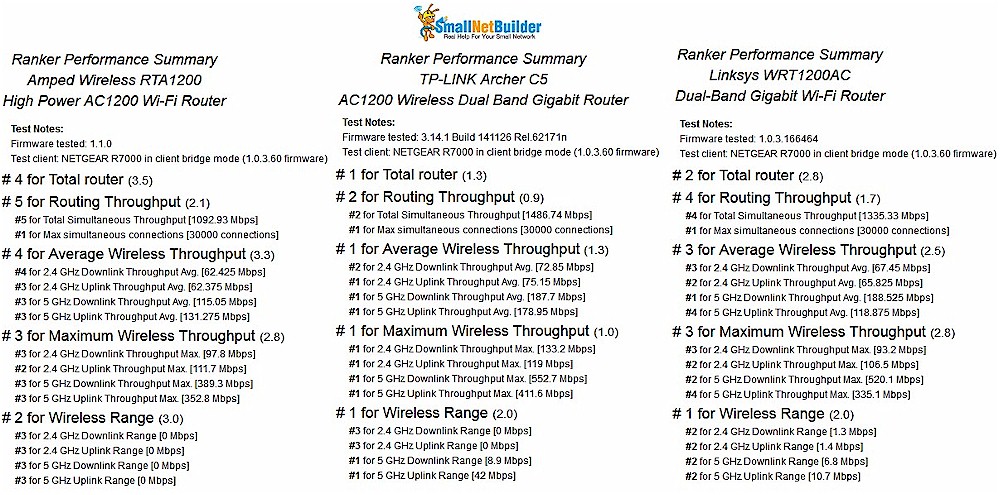
Ranker Performance Summary Comparison
Closing Thoughts
Priced at $160, the Amped Wireless RTA1200 is the second most expensive AC1200 class router you can buy. Only the #2 ranked Linksys WRT1200AC, priced at $180, costs more. For around the same money, you can get the top-ranked AC1900 class NETGEAR R7000 or spend around $40 less for an AC1750 class TP-LINK Archer C8. Both these routers also come with USB 3.0 ports and much faster storage sharing performance.
![]()
